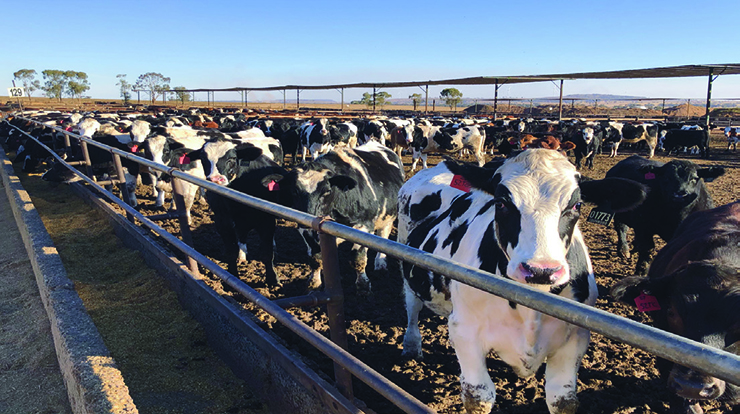
Predicting the eating quality of dairy breeds with MSA
MSA undertakes a wide range of Research and Development (R&D) with the aim of making all cattle and sheepmeat eligible for MSA grading. In 2022–23, research continued on projects investigating the impact of rail transport on beef eating quality, alternative pathways for cattle and sheep through saleyards and the impact of various refeeding protocols, and whether biomarkers in high pH meat can be detected in saliva prior to slaughter. Two research projects were finalised:
- The Wagyu project regarded determining if there is an additional Wagyu effect on eating quality over that which is already predicted by the MSA grading model. Click here for the full Wagyu Report.
- The Dairy Beef project regarded validating the accuracy of the MSA model to predict eating quality of dairy breeds.
The objective of the dairy beef project was to validate the accuracy of the MSA model to predict eating quality of dairy breeds and determine if there was any difference in eating quality between beef and dairy breeds when raised under similar conditions in grainfed and non-grainfed systems.
Results showed that at equivalent hot standard carcase weight (HSCW), dairy carcases in the project typically had similar marbling and ossification, lower P8 and rib fat, and proportionally smaller eye muscle area (EMA) than the beef breed carcases. Beef from dairy steers had equivalent eating quality to beef breeds when finished in feedlot or supplemented pasture-based systems. For dairy breeds, the highest eating quality and MSA compliance was achieved through an accelerated growth high carbohydrate ration (target growth rate of 1.5kg/day) fed from weaning that produced 300kg carcases at 14 months.
The project demonstrated the current MSA model adequately predicts the eating quality of all groups in this trial, which included Holstein, Jersey, Jersey x Holstein and beef breeds. The project also aimed to develop an MSA veal pathway, however, while the dairy veal calves achieved acceptable eating quality, they were non-compliant with existing MSA screening criteria for rib fat and ultimate pH, and potentially compromised by cold shortening reducing their eating quality potential. To create a commercially viable MSA veal model, novel screening criterion in association with alternative chilling regimes may be required.
Adoption of two increased growth rate pathways on a combination of pasture and feedlot and a novel high carbohydrate ration have the potential to produce comparable eating quality outcomes to beef breeds and superior carcase value to the current end points for dairy animals.
These results provide potential opportunities for particularly male dairy calves, especially those from pure dairy breeds.
The project also included the development of new MSA cooking protocols for schnitzel (SNZ). Additional consumer sensory testing was conducted on recently developed MSA cooking protocols for Texas BBQ (TBQ) with superior eating quality outcomes compared to existing grill and slow cook methods.



